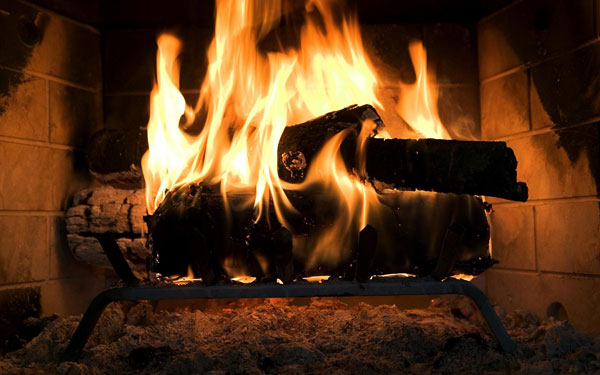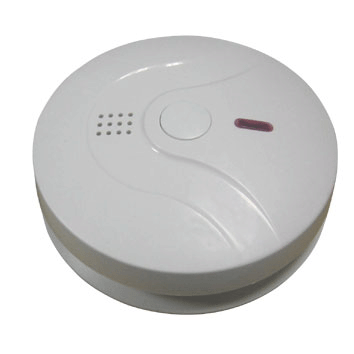Local Fire Departments urge carbon monoxide awareness
Administrator | Nov 27, 2012 | Comments 0
 The Belleville, Prince Edward County and Quinte West Fire Departments are sounding the alarm on a silent killer. Carbon monoxide is invisible and odorless and it can kill you in no time. We are urging all residents to have their chimney, furnace and gas-fired appliances checked annually by professional technicians. We are also reminding everyone that only a carbon monoxide detector can alert you to the presence of the deadly gas. Install one today!
The Belleville, Prince Edward County and Quinte West Fire Departments are sounding the alarm on a silent killer. Carbon monoxide is invisible and odorless and it can kill you in no time. We are urging all residents to have their chimney, furnace and gas-fired appliances checked annually by professional technicians. We are also reminding everyone that only a carbon monoxide detector can alert you to the presence of the deadly gas. Install one today!
The Ontario Association of Fire Chiefs has identified that “Many Canadians die every year from carbon monoxide poisoning in their own homes, most of them while sleeping. For maximum protection, a carbon monoxide detector should be located outside primary sleeping areas or on each level of your home.
The Technical Standards and Safety Association (TSSA) advise that “the best way to ensure that you and your family are not exposed to the dangers of carbon monoxide is to take the necessary steps to eliminate it at the source. Make maintenance of your fuel burning appliances, equipment and venting systems an absolute priority”.
Research shows a strong link between routine maintenance, working carbon monoxide alarms and reduced fatalities from CO poisoning. A detailed information sheet on Carbon Monoxide has been attached to this new release for your reference.
Carbon Monoxide – Be Alarmed.
EMERGENCY 9-1-1
For more information contact PEC Fire Department
FIRE DEPARTMENT NON-EMERGENCY: 613-476-2602
 Where does Carbon Monoxide Come From?
Where does Carbon Monoxide Come From?
Produced when carbon-based fuels are incompletely burned such as:
– Wood
– Propane
– Natural Gas
– Heating Oil
– Coal
– Kerosene
– Charcoal
– Gasoline
What Are the Main Sources of Carbon Monoxide in my Home?
Wood burning/gas stoves, gas refrigerators, gasoline engines, kerosene heaters and others.
How Can I Tell if There is a Carbon Monoxide Leak in my Home?
– Personally
– Headache, nausea, burning eyes, fainting, confusion, drowsiness.
– Often mistaken for common ailments like the flu
– Symptoms improve when away from the home for a period of time
– Symptoms experienced by more than one member of the household.
– Continued exposure to higher levels may result in unconscious, brain damage and death.
– The elderly, children and people with heart or respiratory conditions may be particularly sensitive to carbon monoxide.
Environment
– Air feels stale/stuffy
– Excessive moisture on windows or walls
– Sharp penetrating odour or smell of gas when furnace or other fuel burning appliance turns on.
– Burning and pilot light flames are yellow/orange, not blue
– Pilot light on the furnace or water heater goes out
– Chalky white powder or soot build up occurs around exhaust vent or chimney.
How Can I protect Myself and my Family?
– Regularly maintained appliances that are properly ventilated should not produce hazardous levels of carbon monoxide
– Have a qualified service professional inspect your fuel burning appliance(s) at least once per year.
– Have your chimney inspected and cleaned every year by a W.E.T.T. certified professional.
– Be sure your carbon monoxide detector has been certified to the Canadian Standard Association (CSA) CAN/CGA 6.19 standard or the Underwriters Laboratories (UL) 2034 standard.
– Install a carbon monoxide detector in or near the sleeping area(s) of the home.
– Install the carbon monoxide detector(s) in accordance with the manufacturer’s instructions.
What Should I Do if my Carbon Monoxide Detector Starts Beeping?
– ALWAYS REACT TO A CARBON MONOXIDE DETECTOR THAT HAS ALARMED!
To Keep Safe Please Remember:
You have a responsibility to know about the dangers of carbon monoxide. Your knowledge and actions may save lives.
A carbon monoxide detector is a good second line of defense. It is not a substitute for the proper care and maintenance of your fuel burning appliance(s). Take the time to learn about the use of carbon monoxide detectors in your home to ensure you are using the equipment properly and effectively.
Where To Install A Carbon Monoxide Detector
Since carbon monoxide moves freely in the air, the suggested location is in or as near as possible to sleeping areas of the home. The human body is most vulnerable to the effects of carbon monoxide during sleeping hours. To work properly the unit must not be blocked by furniture or draperies. Carbon Monoxide is virtually the same weight as air and therefore the alarm protects you in a high or low location. For maximum protection, a carbon monoxide detector should be located outside primary sleeping areas or in each level of your home.
Where NOT to Install a CO Detector
Some locations may interfere with the proper operation of the alarm and may cause false alarms or trouble signals.
CO detectors should not be installed in the following locations:
– Where the temperature may drop below 4.4o C (40oF) or exceed 37.8oC (100oF).
– Near paint thinner fumes or household cleaning products. Ensure proper ventilation when using these types of chemicals.
– Within 1.5m (5 feet) of any cooking or open flame appliances such as furnaces, stoves and fireplaces.
– In exhaust streams from gas engines, vents, flues or chimneys.
– Do not place in close proximity to an automobile exhaust pipe; this will damage the detector.
Maintenance
Test your carbon monoxide detector regularly to make sure it is operating properly. The owner’s manual should tell you how to test your alarm. Remember to check the manual for information on when to buy a new carbon monoxide detector.
Filed Under: Featured Articles
About the Author:
































